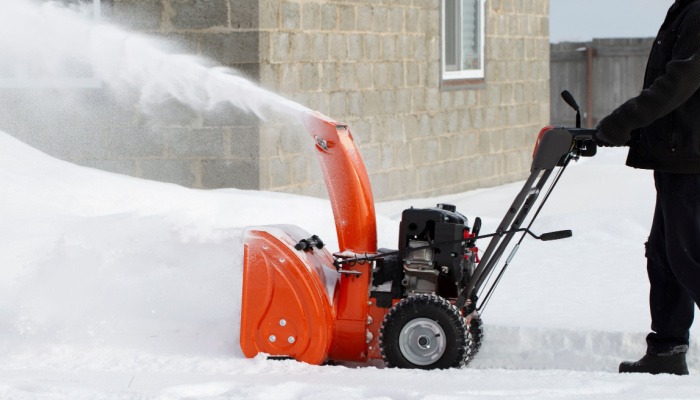Winters in Canada are beautiful, but they can be tough on your yard. The heavy snow, biting winds, and freezing temperatures don’t just test us; they also put a lot of stress on lawns, trees, and gardens. Without the right care, even the strongest landscaping can take a hit.
The good news is that even small planning can make a big difference. With some smart steps before winter, you can keep your outdoor space safe, making sure it bounces back strong in the spring. Whether you count on professional landscaping services in Toronto, need lawn care tips in Mississauga, or just want to protect your favourite plants, this guide will walk you through how to get your property winter-ready.
Why Winter is Tough on Landscaping
Before learning how to protect your yard, it’s important to understand the challenges that winter brings:
- Snow and ice buildup: Heavy layers can crush grass and plants.
- Salt damage: Road and driveway salt can seep into the soil and harm roots.
- Freezing temperatures: Roots, especially for young or newly installed sod, are sensitive to deep freezes.
- Animal activity: Rabbits, deer, and rodents often chew on bark or dig into lawns during winter.
Knowing these risks makes it easier to prepare and protect your landscape from long-term damage
Practical Winter Landscaping Tips You Can Follow
1. Prepare Your Lawn Before the First Snow
A healthy lawn can only survive winter stress. If you want your grass to bounce back in spring, consider these steps:
- Fall Fertilization: Applying fertilizer in fall strengthens roots and helps grass store nutrients for winter.
- Aeration: Aerating allows air, water, and nutrients to penetrate deep into the soil, reducing compaction caused by snow.
- Proper Mowing: Keep grass at a medium height; long grass can mat under snow, while too short grass exposes its roots.
If you are looking for professional help, many homeowners rely on lawn care services in Mississauga to handle these important pre-winter tasks.
2. Protect Your Trees and Shrubs
Trees and shrubs are the backbone of your landscaping, but they can be vulnerable during winters in Canada.
- Wrap delicate trees: Use burlap or tree wrap to protect against freezing winds and sunscald.
- Prune in late fall: Removing weak or damaged branches prevents them from breaking under snow.
- Mulch around the base: A thick layer of mulch insulates roots and locks in soil moisture.
Extra care for young trees is crucial, as their thin bark makes them more prone to winter damage
3. Remove Snow the Right Way
Snow may look pretty, but improper removal can destroy your landscaping.
- Shovel carefully: Avoid piling snow on flower beds or lawns, as it can suffocate grass.
- Use snow blowers wisely: Direct snow away from shrubs and fragile plants.
- Limit salt use: Excess salt can seep into the soil and harm roots. Consider using sand or eco-friendly de-icers instead.
Hiring professionals for snow removal ensures that your driveway and walkways are clear while keeping your landscaping safe.
4. Care for Your Sod In Winter
Sod, known as turf grass, is pre-grown grass that comes in rolls and gives you an instant lawn. If you’ve recently installed sod, you’ll want to pay special attention to it in winter.
- Water before the ground freezes: Moist soil protects roots from drying out.
- Avoid heavy traffic: Foot traffic on frozen sod can cause damage to tender roots.
- Know the cost of protection: While many homeowners focus on sod installation cost, protecting that investment is just as important as the initial expense.
Well-maintained sod will reward you with a lush, green lawn once the snow melts..
5. Winterize Your Lawn Sprinkler System
Your lawn sprinkler system also needs winter care. If water remains in the pipes, it can freeze, expand, and cause cracks.
- Drain and blow out sprinklers: This prevents expensive repairs in spring.
- Insulate exposed pipes: Protect them from freezing temperatures.
- Turn off the main valve: A simple but crucial step to avoid leaks.
By winterizing your sprinkler system, you protect both your landscaping and your budget.
6. Protect Flower Beds and Perennials
Flower beds can suffer from frost damage if left unprotected. To keep them safe:
- Add mulch: It acts like a warm blanket for plant roots.
- Cover sensitive plants: Burlap, fabric, or frost cloth can shield them from icy winds.
- Cut back perennials: Trimming helps reduce disease and keeps beds tidy.
These simple steps ensure your favorite plants return healthy in spring.
7. Plan Ahead with Professional Landscaping Services
Winter preparation can be overwhelming, especially for large properties. That’s why many homeowners rely on landscaping services in Toronto for expert guidance.
Professional landscapers can:
- Prepare lawns, trees, and shrubs for the cold.
- Handle snow removal with minimal damage.
- Winterize sprinkler systems.
- Provide advice on long-term landscaping care.
Investing in professional help saves time, effort, and prevents costly mistakes.
Conclusion
Canadian winters can be long and harsh, but that doesn’t mean your yard has to suffer. A little preparation now—whether it’s protecting trees and shrubs, winterizing your sprinkler system, or caring for your lawn—can make a big difference once the snow melts. It’s not just about surviving winter; it’s about giving your yard a healthy start for spring.
If handling it all on your own feels like too much, local landscaping experts in Toronto and Mississauga can help you get ready for the season. With a bit of planning and care, your outdoor space will come through the cold months strong, green, and ready to be enjoyed when the warmer weather returns.



